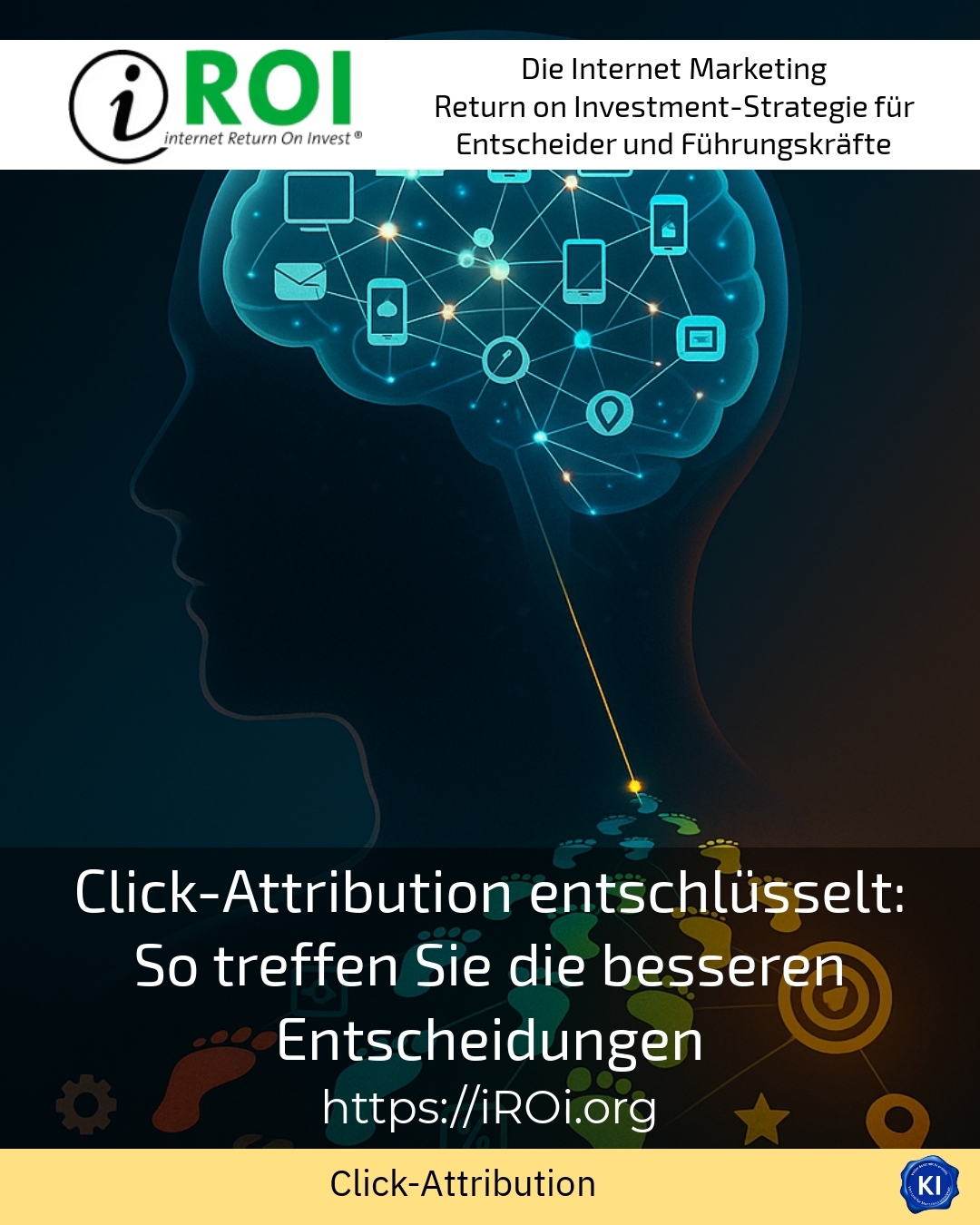The effective use of data to evaluate the effectiveness of marketing campaigns is becoming increasingly important. In particular the Click attribution enables companies to better understand the interplay between different advertising channels and thus make more informed decisions. In the complex customer journey, in which potential customers have several points of contact with a brand, the Click attribution clear impulses as to which channels are particularly valuable.
The basics of click attribution: recognising the value of individual clicks
Click attribution refers to the process by which a user's interactions that lead to a purchase or other desired action are assigned to individual clicks or touchpoints. This makes it possible to track which marketing channel or which advert actually contributes to success in the end. The models differ, for example, in the weighting of the clicks: some attribute the greatest value to the first click (first-click attribution), while others focus on the last click before the conversion (last-click attribution).
In practice, companies often report that the first click in particular is often decisive in arousing interest, as is typical for awareness campaigns in social media. At the same time, retargeting adverts and email marketing often show their strength in the later phases of the customer journey.
Click attribution can therefore be seen as a navigation aid, enabling marketing managers to better manage and allocate budgets in real time. It helps to keep track of complex campaigns across multiple channels in particular.
Practical examples from online retail and the service industry
A fashion retailer has developed Click attribution found that Instagram adverts often generate the first click. This is followed by visits via paid Google searches, which trigger the immediate purchase. This knowledge made it possible to reallocate the budget towards targeted first contact campaigns in the social media sector.
Similarly, an online travel booking platform reports that it used a click analysis to recognise how email newsletters and retargeting ads significantly increase the completion rate after the first click often came via search engines. This not only enables the company to better model the customer journey, but also to use personalised offers.
In the service sector, a coaching provider with several touchpoints shows how the precise breakdown using click attribution helps to identify the most promising channels and recognise inefficient marketing measures at an early stage. This transparency makes budgets and resources more dynamic.
BEST PRACTICE with one customer (name hidden due to NDA contract) The client from the e-commerce sector used a customised attribution model with a focus on click attribution to make the effect of influencer marketing transparent compared to traditional search engine advertising. The result showed that although influencers often made the initial contact, the last clicks before the purchase were more often from targeted SEA campaigns. This knowledge led to an integrated marketing strategy that better mapped the entire conversion funnel and significantly improved efficiency.
How companies can make sensible use of click attribution
Above all, it is important to choose the right attribution models that suit the respective business phase and objectives. First-click attribution is ideal for companies that primarily want to acquire new customers, as it emphasises the original contact. In contrast, last-click attribution supports the analysis of closing mechanisms.
Linear models, on the other hand, distribute the values across all touchpoints and thus provide a comprehensive view, while so-called time course models give more weight to clicks close to conversion. This is useful for time-critical product purchases, for example.
Companies from the technology sector that market new software solutions report that the combination of click attribution with user behaviour analyses provides a valuable basis for continuous campaign optimisation. Not only can they better measure the effectiveness of individual channels, but they can also react quickly to shifts in user behaviour.
Click attribution as a decision-making aid: Impulses for better marketing strategies
By integrating click attribution, companies gain differentiated insights into the customer journey. These insights help marketing teams to critically scrutinise existing measures and try out new approaches in a targeted manner. Clients from a wide range of industries often report that they can utilise budgets more efficiently based on the attribution results.
Above all, this makes it possible to better increase the ROI (return on investment) in online marketing and reduce wastage. It is not uncommon for team satisfaction to increase because successes become transparent and comprehensible.
iROI coaching sees itself as supporting companies in this data-driven change process and provides impetus for the more effective use of click attribution. The focus is always on the specific added value for the respective project.
My analysis
Click attribution provides access to a well-founded analysis of user paths and thus helps to make better marketing decisions. The differentiated view of individual clicks allows budgets to be managed in a more targeted manner and campaigns to be targeted more effectively. Companies from different industries benefit from practical application options to sustainably improve their marketing activities. iROI coaching provides structured support in realising the potential of click attribution.
Further links from the text above:
First-Click Attribution - Atrava
First-Click-Attribution (First-Click-Model) - JupiterEXPRESS
What is Click-Through Attribution - Unity
Attribution model explained simply - Smarketer Glossary
Attribution: Definition & Models - mso digital Wiki
Marketing attribution - Models and best practices - Adobe Business
For more information and if you have any questions, please contact Contact us or read more blog posts on the topic internet Return on Investment - Marketing here.
















